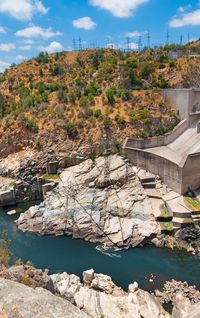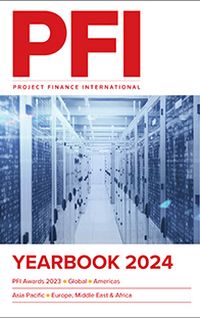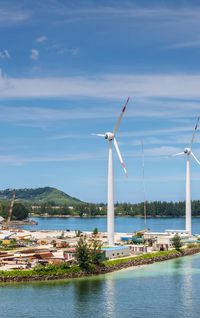LNG leaders met in Athens at the start of December at the World LNG conference to discuss the state of the industry. The focus was on energy security up to 2050. By David Ledesma of South-Court Ltd and distinguished research fellow, Oxford Institute for Energy Studies.
This conference, right from the first speaker, focused on energy security for Europe and that it is LNG that brings this security. Yes, the energy transition is important but "there is no energy transition without energy security". Last year, there was a question in the title of my conference report "LNG, the saviour of the European gas market, but for how long?", the answer was clear this year, in that LNG has a place in Europe’s energy mix right up to 2050, when the European Commission’s stated carbon neutrality target will be reached.
The conference was overall optimistic, but there was a sense of realism that with 100mt of US LNG capacity under construction, the market will remain tight until 2026/27 and then could enter a period of price weakness. This may well challenge new FIDs for additional capacity, in a period when many speakers were of the view that the market will need an additional 50mpya–60mtpa LNG for the 2030s. By 2025, the LNG business will be 460mt in size, nearly doubling in twelve years, and expected to grow to 600mt – what a growing commodity! One word of caution though, with rising costs of developing new LNG capacity, sellers must be careful not to increase prices too much, otherwise price-sensitive markets, which will underpin the growth of the LNG business, will not be able to afford new LNG supplies.
Politicians and industry leaders
Right from the beginning we were reminded by DESFA, the natural gas transmission system operator in Greece, that it took a global crisis to warn countries that they need energy security and that there is a high cost to pay if you don’t have it. It was very clear that Greece not only sees the expansion of its LNG regasification capacity will give it greater energy security, but also to the whole South-East European region.1 The arrival of the Alex LNG FSRU in December, already en route from Asia, with a planned start-up in January 2024, together with expanded pipeline connections with Bulgaria, and other countries, will support the region to diversify energy supplies.
These projects are a key part of the EU’s RE Power initiative that aims to diversify the region’s gas supplies away from Russia. Greece aims to become the regional hub for LNG and gas, and become an import clean energy gateway for Europe. DEPA, the Greek gas supply company, continued this message noting that LNG, and diversity of its supply, gives security of energy supply and “fortifies our resilience against global political instability” as well as underpinning economic growth and regional stability. An important strategic asset that aligns with the global market.
The European market
In a fascinating Europe panel, speakers were of the view that Europe is in a new phase of growth with demand growing for gas as a low carbon secure fuel. There was a concern among some speakers that some organisations were of the view that "everything has to be green", when in reality the market that has to transition away from pipeline gas on which it has been based for decades. In an opening statement, the European Commission was clear that its policy is that Europe needs to be carbon-neutral by 2049, 26 years away, so buyers can still commit to long-term contracts, and import LNG for years to come.
The Commission did note that there is a commitment to reduce greenhouse gases by 55% by 2030 and it is on target, but it is up to buyers as to how they reduce their gas consumption as they move to 2049/50. In an interesting comment, the Commission representative noted that "the cleaner the gas is over the next 26 years, the longer it will have a place in European energy" – cleaning up our act will mean LNG could have greater longevity in Europe. The Commission also noted that LNG has become a baseload supply source, while previously it was used for balancing supply, warning that we are "not out of the woods yet, we still need to be focused". So, following this intervention, the conference was quite positive that there is a place for gas, but contracts need to be flexible.
There is a definite dilemma between the need to decarbonise by 2050 on one hand, while on the other hand, gas and LNG specifically, is needed to give security of energy supply to Europe. The unexpected explosive growth of LNG demand in 2022 led to high prices, large trading margin calls and costs, which resulted in higher prices. Politicians in all European countries did not want this and do not want it to happen again.
One German LNG buyer noted that Europe must engage with LNG sellers and that most new liquefaction final investment decisions (FIDs) have been underpinned by European companies, and that even Green Parties see LNG as part of the solution. One consultant noted that a large volume of the newly contracted LNG is in the hands of aggregators and traders, and that this volume is still to be sold to end-users. This could impact the market balance over the coming years and may fill term buyer needs for additional volumes instead of them underpinning new liquefaction projects.
It was seen that there is some role for small-scale LNG, LNG for ships fuel, bunkers, and supply by road and vessels to off-grid buyers. Volumes are small but important in opening up new markets. As LNG moves to "bio-LNG" and "synthetic LNG", supply in smaller lots will be an important means of opening the new markets.
Issues facing the LNG business
* LNG’s licence to operate – There was a lot of discussion around LNG’s licence to operate. This was aimed at LNG’s role as part of the energy transition, reducing its carbon footprint and remaining affordable. As one speaker said succinctly, the world needs "affordable energy, clean energy and reliable energy".
With the aim of eliminating emissions, there is a need for a common measurement system for methane and other particulates – a common MRV framework. One speaker was of the view that if you buy the right offsets then you can deliver a carbon-neutral LNG cargo to the customer – but proper measurement, proper recording and ownership, though important, we should not seek perfection in setting up measurement systems as we shouldn’t "let perfection be the error of the good".
Many argue that as LNG will replace coal and oil it has a place as a cleaner fuel, but speakers were of the view that LNG emissions themselves need to fall. With 85% of gas in China used outside power and 90% in India, the challenge is to remove gas from these sectors as well as power generation. One speaker felt that the market, through carbon pricing, will manage to reduce emissions. It "makes good economic sense not to emit, with a cost on carbon", then you will stop emitting and be forced economically to be more efficient.
* Need for more investment – With the LNG business moving forwards to become a 600mtpa business by 2040, large amounts of investment are needed to meet the expected LNG growth estimates. One speaker was concerned that project developers should not stop investing too early due to concerns about LNG demand falling, arguing that the even though the industry is reliant on older projects, it still needs to grow. To enable this, again the argument was made as in previous years, that it needs regulatory clarity. A worry was that people making wider decisions may assume that "LNG will be there" when, without the correct regulation and market signals, it may not.
Speakers did note that costs are going up across the board, and the challenge is how can developers absorb the costs such that the LNG and gas remain economic in the markets, especially those that are price-sensitive and may continue to use coal rather than convert to gas. Innovation and technology advances are a way to manage costs and innovator Karpowership explained how it aims to develop its units ahead of demand materialising – so it is ready to supply capacity quickly when required and use its vessels to convert markets from diesel/oil to gas/LNG. One speaker noted that by finding out where the risk is, and putting it in the right place, it will reduce the contingency amounts in construction costs.
There is a view that Europe is well placed with regasification capacity, but LNG import capacity is required in South-East Asia to replace declining domestic gas production as well as in China and India as gas demand grows as it replaces other fuels. There was general praise at the conference for the speed at which new LNG regasification capacity had been put into Germany, indeed RWE was awarded the Company of the Year award for its efforts.
* Price and contracts – Obviously, there was a lot of discussion about gas and LNG price volatility and how new LNG contracts need to be structured. As with last year, there was a view that the market has worked well, but the cost of this is that prices have gone up and markets are volatile and uncertain. There was a call from buyers for more flexibility in contracts to manage market uncertainties, but a word of warning, if all market uncertainty is passed to sellers, then this, together with cost inflation across the board, will mean that prices would include a higher risk premium that could make LNG uncompetitive in some markets. The general view is, as always, that new suppliers need long-term contracts.
There was an interesting call from Beijing Gas, which has have signed several long-term LNG contracts as well as invested throughout the whole chain. Noting that the total capacity of China terminals is over 100mt, they would like to see a China gas index that reflects its market and to buy LNG off that index.
* How to face up to gas’s role in the energy transition – To be honest, there was not much discussion about carbon-neutral LNG except to stress the need for a universal, common emissions measurement system. In a fascinating presentation, one consultant noted that the greenhouse gas emissions on gas supplied to Europe are fairly similar between LNG and pipeline gas and greenhouse gas abatement costs in the USA are actually negative for LNG and pipeline gas.
The conference was being held just as COP28 was starting. The clear statement from COP28 and at the conference is that we are currently on track for a plus 2.9 degrees world not plus 1.5 degrees. One speaker noted that estimates on methane emissions are being under-reported – by 60%. Again, there was the challenge that we must find what the emissions are and where they are being created – accurate verification is critical. There was a hope that with advances in technology, carbon neutrality could be achieved earlier - a vain hope, I fear.
Shipping, the potential elephant
As the conference was in Athens, as last year, there was a good high-level attendance by shipowners. Speakers outlined that there are 300 new LNG vessels on order and the fleet size is expected to grow from the current 628 vessels to 900 or even 1,000 by 2030/35. However, 30% of those vessels are steam ships and dual fuel diesel electric (DFDE) which, with new International Maritime Organisation (IMO) rules coming in next year, means that their trading life will come to an end or increase their costs of operation such that some may have to be taken out of service. One speaker noted that a big part of decarbonising the LNG fleet is understanding the existing fleet and reducing the emissions from that fleet - new builds and scrapping are not the only solutions.
That said, it is unclear how the steam ships will be phased out and this could reduce the fleet to such an extent that freight rates increase. New ships are therefore needed but limited construction slots are available in South Korean yards, but growing Chinese LNG ship construction expertise and yard capacity is good news for the business. Lloyds warned that shipowners need to think how ships being built today will be able to meet future emissions regulations, some that may not be known today. Costs are going up and, as an example, where the cost of an FSRU conversion was US$100m. a few years ago, it is now US$130m–$140m depending on complexity.
It was noted that with two wars and tensions in the world there has been a complete change in energy trade patterns. Russian crude and products now go to Asia, India and South America and Europe buys its crude and products from the Atlantic Basin and Middle East. In LNG, less Russian gas to Europe means it is supplied by US LNG replacing gas from the Middle East that now, together with Asian projects, supplies Asian buyers. The effect of these changes on energy trade patterns is that the industry will see greater tonne/miles.
There was considerable discussion about problems with the Panama Canal, due to drought, which means that only companies with booked slots can go through. The impact of this is that previously ~ one LNG vessel per day was going through the canal and now it is only four or five per month. The alternative routes, via the Suez Canal and the Cape of Good Hope, add considerable costs to shipping.
One panelist gave the example that from the US Gulf Coast to China the "rule of thumb" is that the voyage requires two vessels/million tonne LNG. If you can’t go through the Panama Canal, then it means one more ship is required. One Japanese buyer noted that with rising Panama costs, and uncertainty of transit, Japanese buyers will look to West Coast US/Canada, Mexico and Alaskan projects for new volumes. LNG is still a crucial energy source for Japanese buyers, so reliability of supply is critical.
Financing
As always, the financing panel brought a sense of reality to the conference. With two bankers and a finance expert on the panel it was noted that in financing the quality of a buyer is key and, in many cases, a project is not suitable for financing. Project structuring is key with financing in mind. Government sponsors, which correctly seek equity in the project, often want to fund their equity contribution through debt so it can use its valuable foreign and local currency on domestic projects such as health and education rather than capital projects.
Financing constructs therefore have to be developed to raise funds. It was noted that in Mozambique LNG’s Coral FLNG project, the state company ENH’s debt, 10% of the project, is currently being refinanced now the project is operational to reduce the cost. This is an example as to how to manage the need to finance a government’s equity and reduce its debt costs once construction risk has passed. The bond market is only really available for refinancing projects in mature economies with liquid markets. High inflation has had a large impact on the cost of capital, especially investing in developing markets. This means that some developers have withdrawn, focusing on existing projects, not new large projects.
LNG trading
The market has shown a lot of resilience, but getting through this winter is key. As at November 1 2023, European storage was more than 90% full, but weather is key and El Nino is affecting the weather – warmer, windier, etc – but there could be a spike in prices if we have a harsh winter.
The increased volume of regasification capacity in Germany is expected to affect liquidity in there and it was viewed that some LNG could be priced on Trading Hub Europe (THE). There is a huge trading value in regas now volumes are coming onstream, and it was noted by Uniper that after one of its worst results last year, this year will be one of its best. But we must be careful as the next few years will see unforeseen events and outages in supply facilities which will result in market volatility. In an interesting presentation, The Spark Commodities noted that it may soon be possible to hedge freight rates and is trying to move to a market where you can trade and lock in freight rates. This could start with a blend of floating and fixed rates and as it matures, so could the liquidity of forward freight contracts.
Footnote
1 – It is interesting that a similar regional focus exists in the Baltic region where regional LNG import terminal and pipeline work together to achieve regional energy security
To see the digital version of this report, please click here.
To purchase printed copies or a PDF of this report, please email leonie.welss@lseg.com














